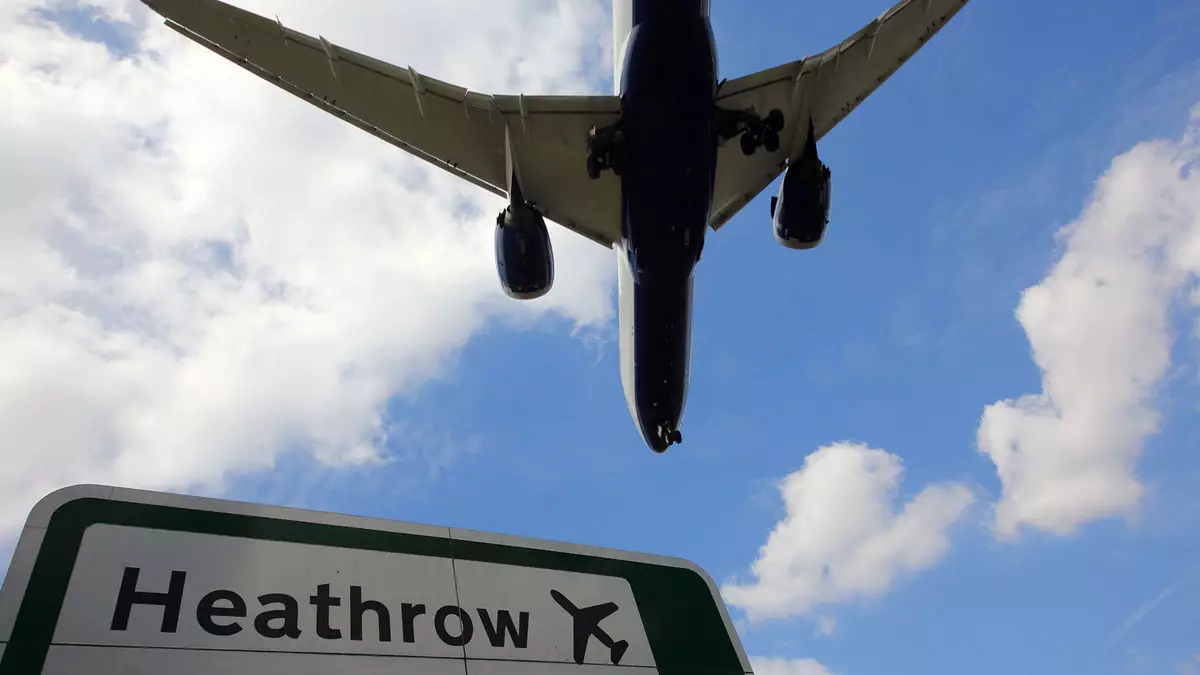On a chaotic Friday at London Heathrow Airport, one of Europe’s busiest transport hubs, the operations came to an unexpected halt due to a fire and subsequent power failure. Events like these, which arise without warning, can challenge even the most strategic logistics plans of any airport, particularly one that serves as a pivotal connecting point for global travelers. The incident not only disrupted the activities of airlines but also set a ripple effect of delays and frustrations for countless passengers who rely on this vital gateway.
As the flames were extinguished and power was gradually restored, Heathrow Airport management worked tirelessly to transmit updates. A brief message from their website reflected a delicate balance of urgency and reassurance, stating that operations would resume but with major reductions. Such approaches prioritize passenger safety and operational integrity yet highlight the acute challenges airports face under pressure—especially those that hold as much significance as Heathrow.
The Ripple Effect: Impact on Airlines and Travelers
The closure of Heathrow had immediate repercussions on the aviation landscape, particularly for British Airways (BA). With a staggering 670 flights (inbound and outbound) scheduled for that day alone, BA found itself in uncharted waters as flights were diverted and schedules scrambled. This level of disruption underscores how interconnected global air travel has become; a single incident at a major hub can unleash chaos across the skies.
Sean Doyle, BA’s chief executive, vocalized the frustrations shared by many during a video message. His candid apology was a reminder of the human aspect often overshadowed by operational statistics. Doyle’s acknowledgment of the complex realities faced by his airline in the wake of this incident not only humanizes the corporate narrative but also underscores a vital lesson: transparency in communication during crises fosters trust in an airline’s reliability and customer care.
Repatriation and Recalibration: The Road Ahead for Airlines
With the situation evolving, airlines were quick to implement recovery strategies. American Airlines and Virgin Atlantic, for instance, expressed confidence in resuming operations. Their response illustrates a critical point—the ability of major airlines to adapt and re-establish connections is as important as deftly managing immediate disruptions.
However, as travelers grapple with uncertainty and logistical rearrangements, the emotional and psychological toll of such disturbances should not be underestimated. The journey of countless passengers turned into an unexpected segment of their travel narrative, with many stranded or redirected to various locations. Airlines like Delta swiftly motioned to minimize frustration for those caught in this web of unpredictability, offering alternative routes and accommodation options, yet the long-lasting ramifications on passenger sentiment and loyalty remain to be seen.
The Future of Air Travel and Crisis Preparedness
As aviation gradually rebounds from various global challenges in recent years, the incident at Heathrow raises questions about crisis preparedness in air travel today. Airports and airlines alike are tasked with enhancing their operational resilience; the strategic planning equations must evolve to mitigate such risks swiftly. Developing comprehensive risk management frameworks that include real-time communication technology, coordination with first responders, and passenger support services will be crucial.
The Heathrow situation serves as a pivotal learning moment. It highlights the persistent fragility of air travel amidst the ever-growing demand for seamless connectivity in an increasingly complex operational environment. As we move forward, air travel stakeholders must craft more robust responses and cultivate a culture of proactive communication. For passengers, the crisis at Heathrow reaffirms the importance of remaining informed—knowledge and preparation may well be the best antidotes to travel disruptions.
In the aftermath, while the flights may have resumed and announcements returned to their regular cadence, the demands of modern air travel remain as pressing as ever. The resilience of airlines and the adaptability of airports like Heathrow will define the future landscape of flying, urging all parties involved to emphasize not just recovery but continual improvement.

